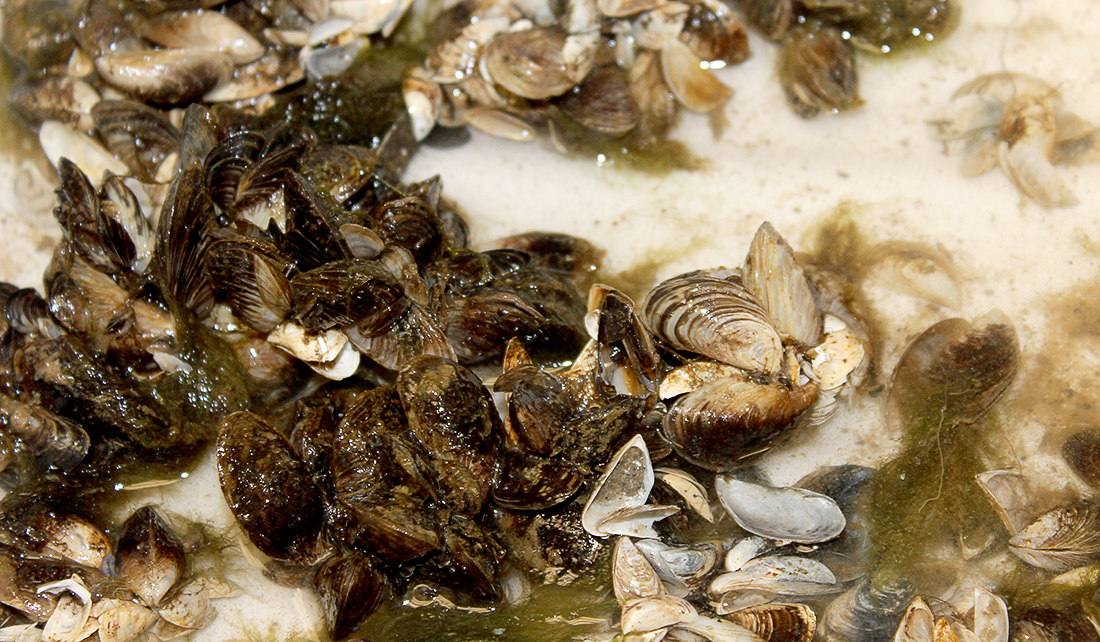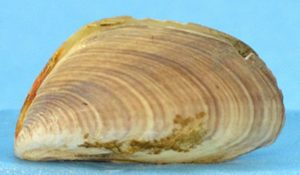
A collaborative research project about the impacts of quagga mussels in Lake Michigan has led to more funding for the issue from the National Science Foundation (NSF). The original project, jointly supported by the Illinois-Indiana and Wisconsin Sea Grant programs, looked at the effects of this invasive mussel in the deep parts of Lake Michigan on plankton abundance, the phosphorus cycle, and water movement.

Harvey Bootsma
The new project is funded by the Biological Oceanography and Physical Oceanography divisions of NSF for more than $1 million with the expectation that the results will be useful in understanding conditions in other large lakes as well coastal areas.
The principal investigators are Harvey Bootsma and Qian Liao with the University of Wisconsin-Milwaukee,
and Cary Troy with Purdue University. David Cannon is a Ph.D. student working on the project at Purdue.
In the original project, the team discovered that quagga mussels in Lake Michigan are eating more plankton than what is reaching them by sinking from above. They’ll be looking at how and why this could happen with the new project.
“We think that food delivery to the bottom of the lake is not just determined by the passive settling of phytoplankton as it’s sinking through the water, but that

Cary Troy
plankton is always being circulated in the lake,” said Bootsma. “It’s like the plankton are on a kind of conveyor belt where they’re going up and down.”
The researchers now will be studying turbulence in the entire water column.
Troy studied the impact mussels have on water movement as they filter it—sucking in water and spitting it
out. “Although this filtering has a dramatic effect on water quality, we found that quaggas do not strongly influence movement throughout the entire water column,” explained Cannon.
But the movement they cause in the thin layer immediately above the lake bed—a

Qian Liao
phenomenon consistent throughout the year thanks to stable temperatures at the bottom of Lake Michigan—is an element missing from most mussel filtration models.
The researchers also found that the mussels are changing the phosphorus cycle in the lake. “The nutrient-loading models used to set limits for phosphorus aren’t accurate anymore because of these new components to the ecosystem – bottom-dwelling filter feeders,” Bootsma said. “They have changed the rules for how Lake Michigan works.

David Cannon
“Lake managers have a conundrum right now. They’ve got too much algae in the nearshore zone and they want to reduce phosphorus to solve that problem. But there’s not enough phytoplankton in the offshore zone because of the mussels. So if they reduce phosphorus loading in the lake, they could make that offshore problem even worse so that there’s virtually no food left out there for the rest of the food web,” Bootsma said.
With the new project, Bootsma said his team hopes to determine what the “sweet spot” is for phosphorus loading. “There may not be one perfect phosphorus load that solves both the nearshore and offshore problem, but we’d like to try and find one that minimizes the nuisance algae while at the same time keeps the offshore animals alive with enough plankton production.”
The NSF project will start this spring. “Although we’re focusing on Lake Michigan, the work has implications for most of the other Great Lakes as well as other lakes in general that are being invaded by mussels,” Bootsma said. “We’re looking at a fundamental change in the way lakes work, and that’s the kind of thing the NSF is interested in.”
 “It’s generally accepted that the ecosystems of smaller, shallower lakes—Lake Erie, for example—are at the greatest risk of quagga mussel invasion,” Cannon added. “Our results could help show other researchers that the effects of mussels on large, deep lakes cannot be ignored and, more importantly, how they can be accounted for.”
“It’s generally accepted that the ecosystems of smaller, shallower lakes—Lake Erie, for example—are at the greatest risk of quagga mussel invasion,” Cannon added. “Our results could help show other researchers that the effects of mussels on large, deep lakes cannot be ignored and, more importantly, how they can be accounted for.”
Irene Miles, IISG coordinator of strategic communication, contributed to this post.
Illinois-Indiana Sea Grant is a part of University of Illinois Extension and Purdue University Extension.

